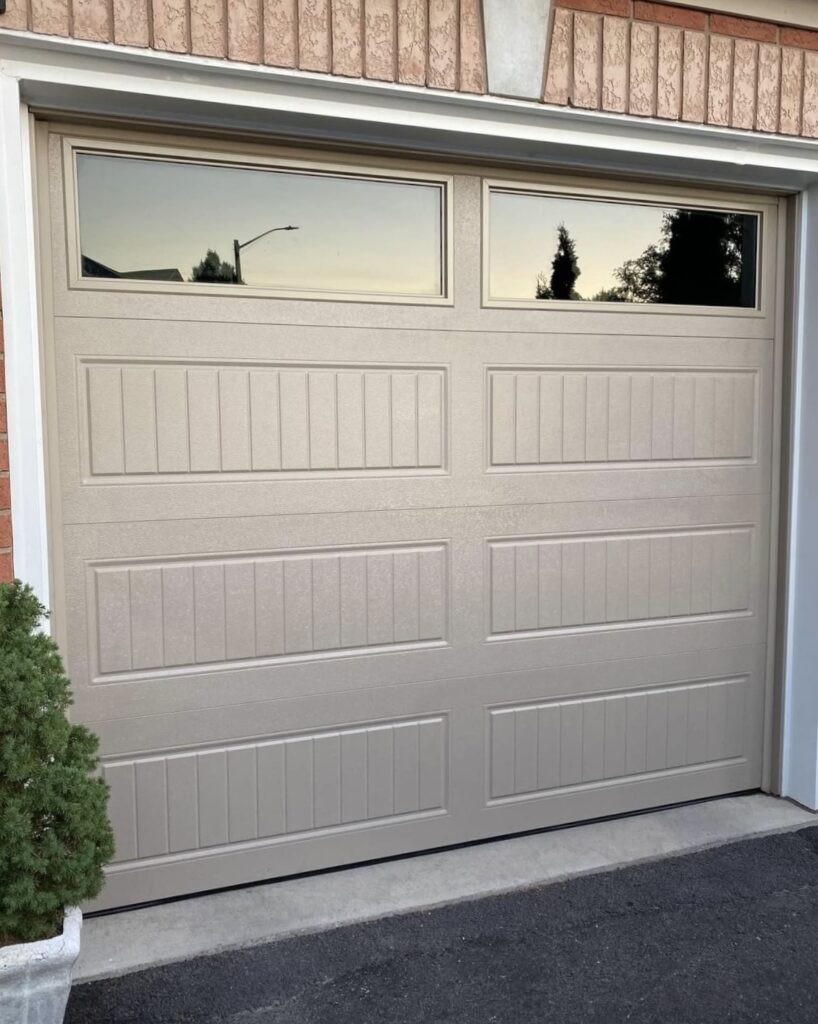Energy efficiency isn’t limited to the main living spaces of your home; it extends to every corner, including your garage. A well-insulated and energy-efficient garage door can significantly impact your home’s overall energy consumption, comfort, and even your utility bills. In this blog post, we’ll explore actionable steps to enhance your garage door’s energy efficiency, ensuring that this often overlooked area contributes positively to your home’s sustainability efforts.
- Upgrade to Insulated Garage Doors:
Insulation is Key: The first and most impactful step in boosting energy efficiency is choosing insulated garage doors. Insulated doors help regulate temperatures within the garage, preventing heat loss during winter and heat gain during summer.
R-Value Matters: When selecting insulated doors, pay attention to the R-value. This value indicates the door’s thermal resistance—higher values mean better insulation. - Seal Air Leaks:
Weatherstripping and Seals: Ensure that your garage door’s weatherstripping and seals are in good condition. Replace any worn-out or damaged components to prevent drafts and air leaks.
Install Bottom Seal: A bottom seal or threshold seal prevents air infiltration at the base of the door, further enhancing energy efficiency. - Consider Thermal Breaks:
Panel Design: If you’re replacing your garage door, consider doors with thermal breaks between panels. These breaks help prevent heat transfer through the door’s sections. - Optimize Garage Door Opener Usage:
Energy-Efficient Openers: Choose a garage door opener with energy-efficient features. Modern openers consume less energy and have standby modes when not in use.
Limit Usage: Minimize unnecessary garage door openings to prevent the escape of conditioned air. This practice can significantly impact energy efficiency over time. - Maintain Proper Ventilation:
Ventilation Matters: Proper ventilation prevents moisture buildup and helps regulate temperatures in your garage.
Strategic Placement: Install vents strategically to prevent creating pathways for drafts or extreme temperatures. - Insulate Garage Walls and Ceiling:
Comprehensive Approach: Boost overall energy efficiency by insulating the garage walls and ceiling. This step prevents outside temperatures from impacting the garage’s internal environment. - Consider Windows and Lighting:
Windows: If your garage has windows, ensure they are energy-efficient with proper seals to prevent drafts.
LED Lighting: Opt for energy-efficient LED lighting to minimize energy consumption within the garage. - Regular Maintenance:
Seal and Lubricate: Regularly inspect and maintain the door’s seals, weatherstripping, and moving parts. Lubricate hinges, rollers, and tracks to ensure smooth operation.
Enhancing your garage door’s energy efficiency requires a holistic approach, encompassing insulation, sealing, ventilation, and maintenance. By investing in insulated doors, addressing air leaks, optimizing garage door opener usage, and considering other energy-efficient measures, you can create a garage space that contributes positively to your home’s overall energy conservation efforts. Remember, every step you take toward energy efficiency not only reduces your environmental footprint but also leads to long-term savings on energy bills.
Contact us at (647) 424-3555

